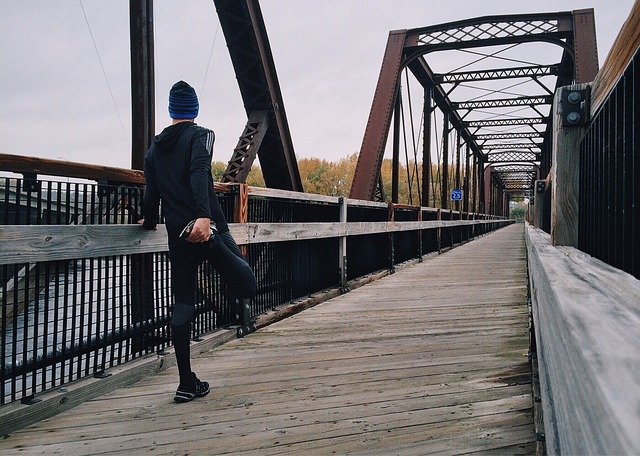So you’re friends want you to come hike with them, but how do you train for hiking? Fair question. Hiking is known to be a fun activity where fresh air, good vibes, and splendid views all come together as one beautiful symphony.
For the most part, it is a year-round activity with each hike and trail unique in its own way.

From mountain climbing, shorter day hikes, backpacking trips and multi-day hikes trips. All in different altitudes, landscapes and trail conditions.
Training for a hiking trip is important to help avoid injuries and make you feel more confident and stronger on those sometime rough terrains.
5 Easy Tips to Train for Hiking
The last thing anyone wants is to be mid-hike and realize it’s too challenging and have it ruin the rest of your trip. Follow these five quick and easy tips will help kickstart your training to become a confident and more efficient hiker!
Step 1: Stick To The Basic Workout
You don’t want to plan out difficult workouts and exercises that require a specific type of equipment or even access to a gym. Training for a hike doesn’t need to be complicated you just need to stick some basic exercise moves, which anyone can do at home.
READ MORE: 6 Key Tips to Hiking Safely
Bodyweight exercises such as push-ups and squats help maintain and build muscle, as well as, strength both your upper and lower body. Also, something as simple as a run or walk done consistently leading up to your trip will help build up your cardio and endurance. The combination of both will do wonders for your health and make your upcoming hike less strenuous.
Step 2: Best Bodyweight Exercises for Hiking
Now that we know that we don’t need fancy equipment or a gym to prepare for a hiking trip physically, let’s explore some of the best bodyweight exercises that you can do to train for hiking.
- Squats – The king of leg exercises that train all of the bigger leg muscles including your quads, hamstrings and glutes, is a must for stronger legs.
- Lunges – is a single-leg bodyweight exercise that works your hips, glutes, quads, hamstrings and core, including the hard-to-reach muscles of your inner thighs. Lunges can help you develop lower-body strength and endurance, complementing squats very well.
- Calf Raises – Calves are engaged a lot while hiking. While hiking itself will get them stronger, you want to make sure you go in with strong calf muscles. This will contribute to bigger muscles and better endurance when you face-off with those steep inclined trials.
- Push-ups – The holy grail of bodyweight exercises for upper body development. Traditional pushups are super beneficial for building upper body strength. They work the triceps, pectoral muscles and shoulders. When done with proper form, they can also strengthen the lower back and core by engaging (pulling in) the abdominal muscles.
- Plank – Core strength is also important and planks are a great way to workout your core without having to do sit-ups. When you workout your core you’re working out your whole body, from your pelvic girdle to your shoulder girdle, as well as, your legs. Planking also strengthens your spine, your rhomboids, trapezius and your abdominal muscles, which naturally result in a strong posture as they grow in strength.
Step 3: Train To Build Cardio And Endurance
Having strong upper and lower body muscles to help carry your backpack full of essential supplies is only one piece of the puzzle. The most important piece to your training will be to build your cardiovascular endurance.
Walking and running are some of the best ways to build endurance and train for a hiking trip. However, if you’re not the running type you can always achieve your fitness goals by doing something you truly enjoy.
For example, kayaking, playing beach volleyball, hitting the basketball court or going for a bike ride. Whatever gets you excited and keeps you engaged and training, without getting bored or discouraged.

Step 4: Mix up Your Training for Hiking
Make sure you’re mixing up your training and doing both cardio work and muscle building workouts. It’s recommended to do at least three cardio sessions a week paired with two strength-training sessions a week. Priority should fall on cardio and endurance training since this is what you will need the most on your hikes.
Here are the three main key points to always remember when mixing things up to avoid overtraining and injuries:
- Strength training should be done on nonconsecutive days.
- Plan for three nonconsecutive cardio sessions weekly until the final two weeks before a major hike
- Plan for at least two rest days a week
Most importantly, don‘t forget to listen to your body and don‘t do what doesn’t feels right.
Step 5: Don‘t Forget To Stretch
Stretching is the one factor that many tend to forget. The process is critical for injury prevention and quicker recovery for the next workout or hike. There are two simple but golden rules to remember about stretching which will apply to both hiking and workout sessions.
- Dynamic Stretching is active stretching with exercises such as jumping jacks, high knees, and other similar exercises. Do these before your activity to warm up the muscles, get your heart rate up and blood flowing. This will get you ready for more strenuous activities and exercises and will help avoid injuries.
- Static Stretching are done after you have completed your activity. This entails a quick 5-15 minute stretch to help reduce lactic acid throughout the body, increase flexibility, reduce the risk of injury and most importantly help with recovery. This type of stretching is especially important for leg muscles when you are training.
Pin it!
